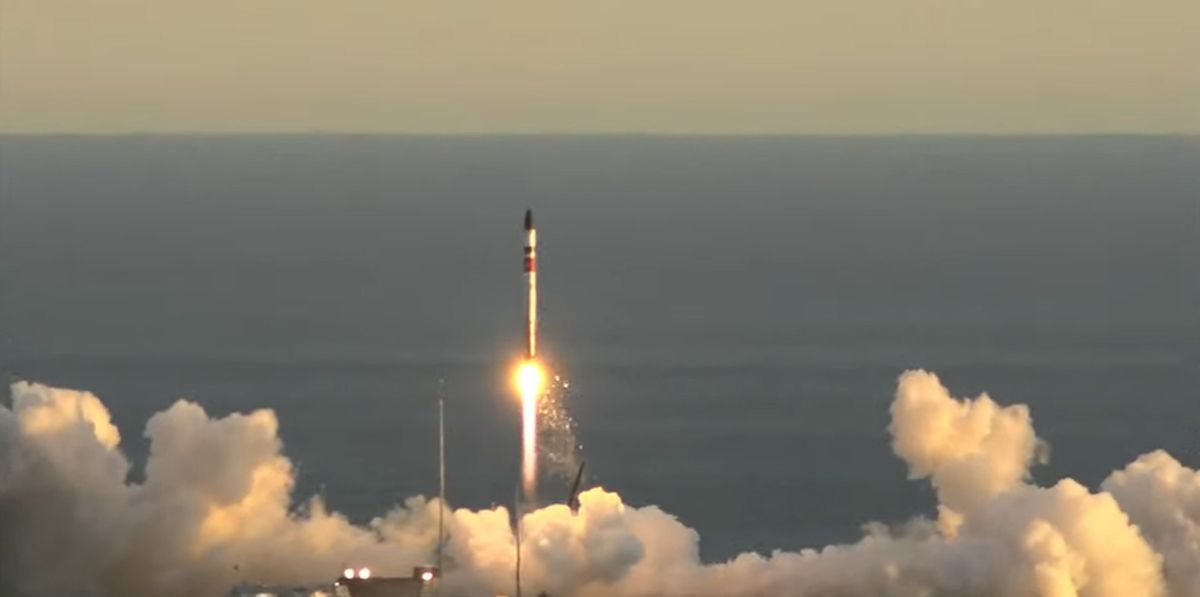
www.space.com
Rocket Lab launches US spy satellite on mystery mission
The U.S. National Reconnaissance Office's NROL-199 mission launched early this morning (Aug. 4) atop a Rocket Lab Electron booster from New Zealand.
Science & Tech
The U.S. National Reconnaissance Office's (NRO) NROL-199 spacecraft launched today (Aug. 4) atop a Rocket Lab Electron booster from New Zealand, rising off the pad at 1 a.m. EDT (0500 GMT; 5 p.m. local time in New Zealand).
If all goes according to plan, Rocket Lab will deploy the satellite about an hour after liftoff. The launch occurred about two days later than planned after high winds delayed an attempted liftoff on Aug. 2. Rocket Lab shut down its webcast shortly after the Electron reached orbit at the request of the NRO.
The NRO builds and operates the United States' fleet of spy satellites. The agency generally keeps details about those satellites' activities under wraps, and NROL-199 is no exception; we have only a vague idea of what the spacecraft will be doing in Earth orbit.
"The payload will support the NRO to provide critical information to government agencies and decision makers monitoring international issues," Rocket Lab wrote in a description of today's mission (opens in new tab), which it called "Antipodean Adventure."
NROL-199 is a joint effort of the NRO and the Australian Department of Defence (AUS DoD). The two organizations also teamed up on another satellite, NROL-162, which an Electron launched less than three weeks ago on July 13.
"Both [the] NROL-199 and NROL-162 missions are a demonstration of responsive launch under NRO's Rapid Acquisition of a Small Rocket (RASR) contract for launching small satellite[s] through a streamlined, commercial approach and are the third and fourth missions contracted to Rocket Lab by the NRO under the contract," Rocket Lab wrote in the "Antipodean Adventure" mission description.
The other two missions that launched under the RASR contract lifted off in January 2020 and June 2020, the company added.
The 58-foot-tall (19 meters), two-stage Electron was designed to give small satellites dedicated rides to orbit. It can do more than that, however; an Electron recently sent NASA's CAPSTONE cubesat toward the moon, and Rocket Lab plans to launch a private mission to Venus next year.
"It has been a busy few weeks here at Rocket Lab," the company's communications manager Murielle Baker said during live launch commentary Thursday. The company's CAPSTONE moon mission for NASA launched on June 28 and was followed 15 days later by the NROL-162 mission, marking Rocket Lab's fastest turnaround between missions yet, Baker said.
Electron is an expendable vehicle, but Rocket Lab is working to make its first stage reusable. The plan calls for catching falling first stages with a helicopter, then hauling them back to land for inspection, refurbishment and reflight.
The company has recovered Electron first stages on several recent missions, even snagging one booster (albeit briefly) with a chopper. There were no such activities on "Antipodean Adventure," however; the Electron first stage ditched into the Pacific Ocean shortly after separating from the upper stage.
























































